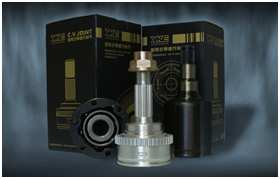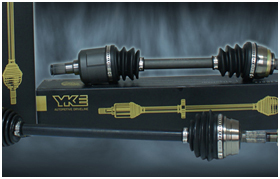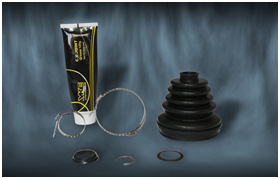 |
| Constant velocity joints |
 |
Constant velocity joints allow a drive shaft to transmit power through a
variable angle, at constant rotational speed, without an appreciable increase
in friction or play. They are mainly used in front wheel drive, and many modern
rear wheel drive cars with independent rear suspension typically use cv joints
at the ends of the rear axle halfshafts, and increasingly use them on the
proshafts. Constant-velocity joints are protected by a rubber boot, a CV
gaiter. Cracks and splits in the boot will allow contaminants in, which would
cause the joint to wear quickly.
|
| Drive shaft |
 |
Drive shaft is a mechanical component for transmitting torque and rotation. The
axle shafts transmit motion to the wheels, allowing them, where required, to
turn at different speeds in order to cover paths of differing lengths. The
front wheel, and also the steering wheel, the drive shaft used to promote the
development for FWD and 4wd vehicles as well.
|
| Boot kits |
 |
The
boot kit consists of: boot, clamps, locking rings and grease. The boots are
made with two types of materials: neoprene or thermoplastic. Oil resistant,
fire resistant, resistant to high and low temperature 40-120, ozone resistance,
acid-base resistance, and high tensile strength and tightness.
|
|
|